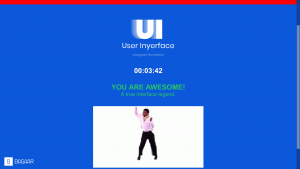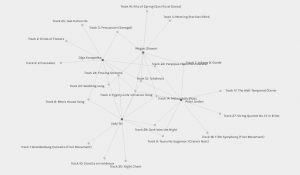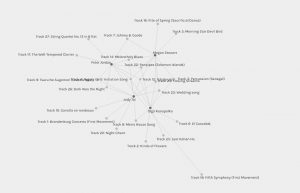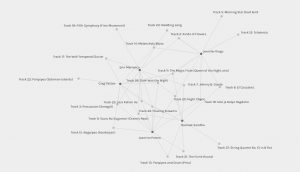Narrative 1 – ‘Physical’ Virtual classrooms
Combining the popular virtual Bitmoji classroom now with the popular trilogy, The Matrix, and the surrogate idea from a 2009 science fiction movie called Surrogates (humanoid remote-controlled robots), the future of learning can take place in the comfort of your own home. All you need to do is plug yourself in and fully emerge yourself online. By laying in our specially designed bed that automatically connects sensors onto your body, you will feel as if you are physically in the virtual classroom with your teacher and classmates. Now, with the added features, you can choose to style yourself however you want to present yourself to the virtual world.
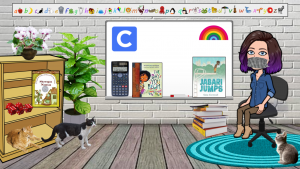

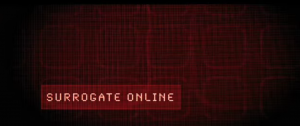
Johnny lays on the bed and puts on his VR goggle as the sensors connect his body to the bed. Johnny sees ‘Surrogate Online’ means his other self is connected to the virtual world. Johnny enters his classroom and sees his teacher, Ms. Tai, sitting in front of the whiteboard.
Ms. Tai “You’re late, Johnny.”
Johnny “My bed needed to update before I can make the connection.”
Ms. Tai “We’ve finished our morning routine already. Jump into the whiteboard to see
what you’ve missed.”
Johnny walks by his friend, Bob, as they give each other a high five. Johnny can feel the hard slap by Bob as his arm twitches slightly on the bed.
Johnny walks toward the whiteboard and gives it a tap. He sits down while a video file pops up and pixels begin to surround him. Johnny taps on the ‘speed 2x’ button and the pixels around him shows his classmates working through the morning routine with Ms. Tai as if Johnny is part the class. As the video file is near the end, Johnny jumps backwards and he’s out of the whiteboard.
Johnny “I’m done. What do I do now?”
Ms. Tai “Shhh … go to the bookshelf and grab your book. We’re on chapter 18 now.”
Johnny looks around the classroom. He sees his friends all sitting at their desk reading their book. Johnny taps on ‘Private Chat’ and selects the name ‘Bob’.
Johnny “Hey Bob! What book are we reading?”
Bob “What do you mean what book? We’ve been reading this book for 2 weeks already!”
Narrative 2 – A.I. Study Buddy
An extension of the Twine and the Algorithms unit – A.I. Study Buddy
The reasoning behind this Twine activity is an extension of what we have learned about computer algorithm and how it pre-determines what viewers might be interested in. Even though this activity offers choices for you to decide if you want to learn and review History or Geography, it is really looping you back to how Indigenous people in the early 19th century were colonized and the effects of colonization; simply because this section may contain more information that might interest you over learning about Canadian geography. Will A.I. (artificial intelligence) Study Buddy take over how we study in the near future? This will be hard to determine since everyone studies differently with different strategies. As Vallor explained that our current AI is also known as Narrow AI, which means that it is meant to be used for simple task-specific operations so it has an issue “solving problems that are complex and unpredictable where goals aren’t simple and clear” (Santa Clara University, 2018). If AI decides for us what it deems as important knowledge, then what happens if the infinite loop happens like this Twine example and students end up learning more about colonization rather than Canadian geography thus unintentionally creating a learning gap. Maybe in 30 years, we will be one step closer to reaching A.G.I (artificial general intelligence). Then, we might be able to have a more flexible AI that is able to determine what we need to better prepare for what the future students need to thrive in their field of study.
References
Facing History and Ourselves. (2021). Dispossession, Destruction, and the Reserves. Retrieved from https://www.facinghistory.org/stolen-lives-indigenous-peoples-canada-and-indian-residential-schools/historical-background/dispossession-destruction-and-reserves
Government of Canada (2021). Origin of the name “Canada”. Retrieved from https://www.canada.ca/en/canadian-heritage/services/origin-name-canada.html
Hannah. S, (August 14, 2020). Educators Turn to Bitmoji to Build Community and Engagement. Edutopia. Retrieved from https://www.edutopia.org/article/educators-turn-bitmoji-build-community-and-engagement
Santa Clara University. (November 6, 2018). Lessons from the AI Mirror Shannon Vallor [Video]. YouTube. https://www.youtube.com/watch?v=40UbpSoYN4k&t=212s
UKFilmFactory. (May 18, 2009). Surrogates Official Movie Trailer [Video]. YouTube. https://www.youtube.com/watch?v=KC5TrKNIDHQ




